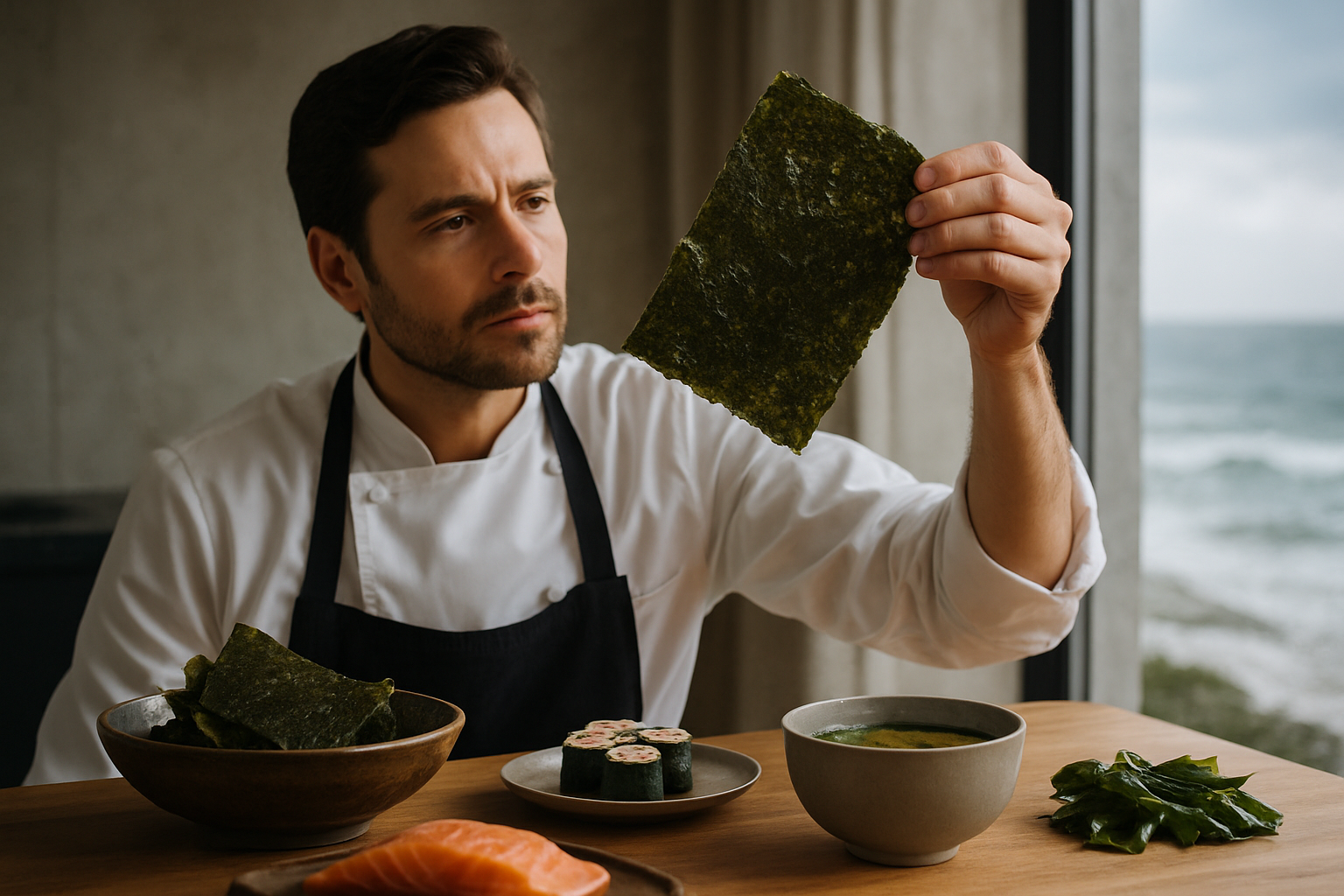Savory Seaweed: The Ocean's Umami Treasure
Dive into the world of edible seaweed, a nutrient-dense superfood making waves in global cuisine. From nori-wrapped sushi to crispy seaweed snacks, this versatile ingredient is transforming plates and palates worldwide. Discover how chefs and home cooks alike are harnessing the power of sea vegetables to add depth, texture, and a briny punch to their culinary creations.

Seaweed Varieties: A Taste of the Ocean
The world of edible seaweed is vast and diverse, offering a range of flavors, textures, and culinary applications. Nori, the dark green sheets used to wrap sushi, is perhaps the most recognizable variety. Its delicate, crisp texture and subtle marine flavor make it a versatile ingredient beyond Japanese cuisine. Wakame, with its silky texture and mild taste, is a common addition to miso soup and salads. Kombu, a thick, leathery kelp, is prized for its ability to impart deep umami flavors to broths and stews. Dulse, a red seaweed with a chewy texture and surprisingly bacon-like flavor when fried, is gaining popularity as a savory snack. Sea lettuce, with its bright green hue and delicate texture, adds a fresh, briny note to salads and garnishes. Each variety of seaweed brings its own unique characteristics to the table, offering chefs and home cooks a palette of oceanic flavors to explore.
Nutritional Powerhouse: The Health Benefits of Sea Vegetables
Seaweed isn’t just a flavorful addition to your plate; it’s also a nutritional powerhouse. Packed with essential vitamins, minerals, and antioxidants, sea vegetables offer a wealth of health benefits. Iodine, crucial for thyroid function, is abundantly present in many seaweed varieties. Seaweed is also rich in iron, calcium, and magnesium, making it an excellent supplement for plant-based diets. The high fiber content of seaweed aids digestion and promotes gut health. Many varieties are also a good source of omega-3 fatty acids, typically associated with fish consumption. Antioxidants found in seaweed, such as fucoxanthin, have been linked to anti-inflammatory and anti-cancer properties. As consumers become more health-conscious, the nutritional profile of seaweed is driving its popularity as a functional food ingredient. From seaweed-infused supplements to nutrient-dense snacks, the health food industry is capitalizing on the myriad benefits of these sea vegetables.
Culinary Innovation: Seaweed Beyond Sushi
While seaweed has long been associated with Asian cuisines, innovative chefs are pushing the boundaries of its culinary applications. In fine dining establishments, chefs are using seaweed to add complexity to dishes, incorporating it into broths, sauces, and even desserts. Seaweed butter, infused with umami-rich kombu, is becoming a popular condiment, lending depth to everything from grilled meats to roasted vegetables. In the world of mixology, bartenders are experimenting with seaweed-infused spirits and garnishes, creating cocktails with a distinct oceanic twist. The food industry is also embracing seaweed as a natural flavor enhancer and colorant, using it in products ranging from artisanal breads to plant-based meat alternatives. As consumers seek out new and exciting flavors, seaweed is proving to be a versatile ingredient capable of surprising and delighting palates across various culinary traditions.
Sustainable Superstar: The Environmental Impact of Seaweed Cultivation
In an era of increasing environmental awareness, seaweed cultivation stands out as a beacon of sustainability in food production. Unlike land-based agriculture, seaweed farming requires no freshwater, fertilizers, or pesticides. It grows rapidly, with some varieties capable of increasing their biomass by up to 10% per day. Seaweed farms act as carbon sinks, absorbing CO2 from the atmosphere and helping to mitigate ocean acidification. They also provide habitat for marine life, contributing to biodiversity in coastal ecosystems. As concerns about overfishing and the environmental impact of traditional aquaculture grow, seaweed farming offers a sustainable alternative for coastal communities. From reducing reliance on land-based crops to providing eco-friendly packaging materials, the potential applications of seaweed extend far beyond the culinary world, positioning it as a key player in the fight against climate change and food insecurity.
Seaweed Secrets: Tips for Culinary Exploration
-
Start simple: Try adding crushed nori to popcorn or roasted nuts for an umami-rich snack.
-
Experiment with seaweed salad: Mix rehydrated wakame with sesame oil, rice vinegar, and grated ginger for a refreshing side dish.
-
Boost your broth: Add a strip of kombu to vegetable or bone broth for enhanced flavor and nutrition.
-
Create seaweed butter: Blend dried seaweed flakes into softened butter for a savory spread.
-
Try seaweed as a salt substitute: Use finely ground dulse to add a salty, mineral-rich flavor to dishes while reducing sodium intake.
-
Explore seaweed snacks: Look for crispy seaweed chips or seasoned nori sheets for a healthy alternative to traditional snacks.
As we continue to explore the depths of culinary possibility, seaweed emerges as a true treasure from the ocean. Its versatility, nutritional benefits, and sustainability make it a ingredient poised to revolutionize our approach to cooking and eating. From enhancing umami in traditional dishes to inspiring entirely new culinary creations, seaweed offers a world of flavor waiting to be discovered. As we embrace this oceanic bounty, we not only enrich our palates but also contribute to a more sustainable food system. The seaweed renaissance is more than just a trend; it’s a delicious journey towards a healthier, more flavorful, and environmentally conscious future in gastronomy.





